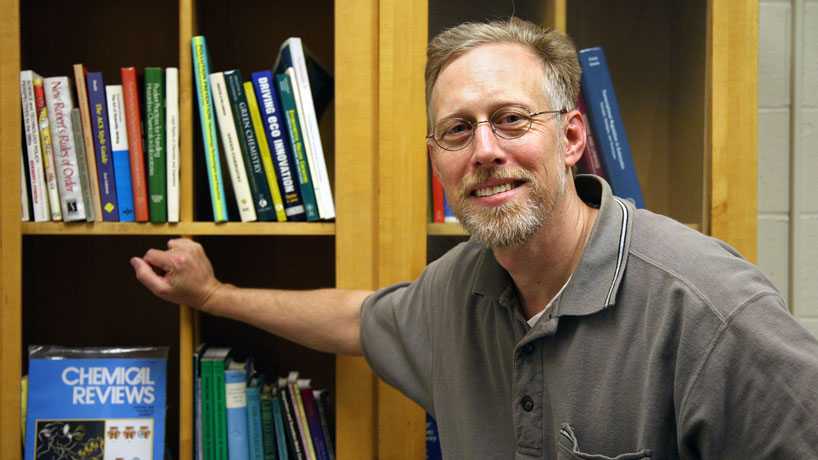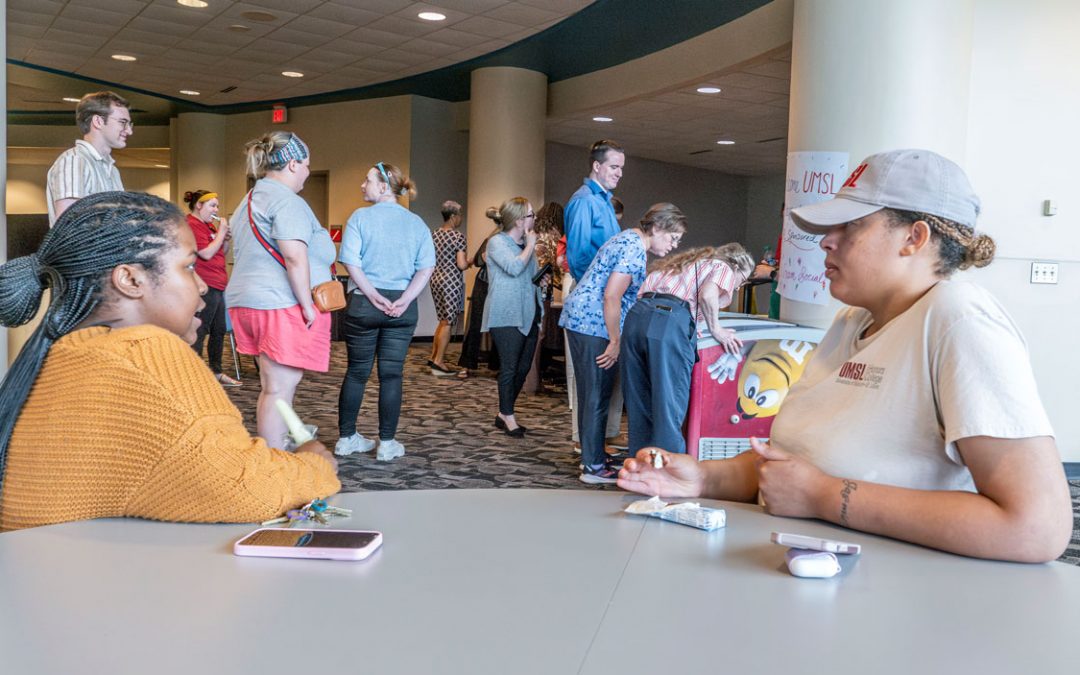
Professor of Chemistry James Bashkin is the moderator for the Nov. 19 lecture and discussion panel titled “Infectious Diseases and Their Impact on American Society,” the next in the Hellen and Will Carpenter Series on Contemporary Issues in American Society.
Human papillomavirus is the most common sexually transmitted infection in the U.S. according to the Centers for Disease Control and Prevention. That fact alone makes the work of James Bashkin, a professor of chemistry at the University of Missouri–St. Louis, important.
Bashkin and his team of researchers have been working on antiviral compounds to help clear persistent HPV infections that run the risk of turning into many different types of cancer, not just cervical cancer, the one most often associated with HPV. He is also co-founder of the company NanoVir, which focuses mainly on developing a cure for HPV through the DNA-targeted antivirals.
As an important scientist in the infectious disease field, Bashkin will moderate the Nov. 19 lecture and discussion panel titled “Infectious Diseases and Their Impact on American Society.” The discussion is the next in the Hellen and Will Carpenter Series on Contemporary Issues in American Society and is also sponsored by UMSL’s College of Arts and Sciences. The event begins with a reception at 6:30 p.m. before the lecture and discussion panel at 7 p.m. in the J.C. Penney Conference Center at UMSL.
Gain a little insight here from Bashkin himself into the societal issues surrounding HPV, his research and NanoVir’s work toward a cure.
Discussion of sexual health issues is often stilted. Why is it important we get over this stigma?
It is dangerous to be caught up with social stigmas at the expense of human health. Anytime that we ignore serious diseases and their causes because somebody may be uncomfortable discussing the mode of transmission, such as sex, we put people at greater risk for serious health consequences, and in some cases, death. Through discussion people can be educated about preventing the spread of infectious diseases, and I hope, avoid contracting any.
Why should both men and women be concerned about HPV?
In order to eradicate HPV, we need to eradicate it from all carriers, not just from half the population. Men carry HPV even if they don’t always show symptoms, but if they contract genital warts, the symptoms will be disfiguring. Although cervical cancer is far more common than penile cancer, there is a real chance of developing penile cancer. It is also possible for both men and women to develop other anogenital cancers from HPV, and both can develop oral and other head and neck cancers from HPV. In addition, low-risk HPVs associated with unpleasant genital warts can be transmitted to children, while in the birth canal, leading to a relatively rare but terrible set of diseases of the esophagus, lungs and related tissue. These diseases, often fatal, affect boys as well as girls, and are called recurrent respiratory papillomatosis or RRP. So, there is really a large set of reasons for both men and women to be concerned about HPV, some of which may seem altruistic for men, but they are accompanied by plenty of self-serving reasons, too.
How exactly does HPV turn into cancer?
First, while HPV interferes with some aspects of the immune system, the majority of people overcome their infections. However, once a persistent, high-risk HPV infection has been established, HPV produces proteins that interfere with the human biochemical reactions designed to kill cells if overly severe DNA damage occurs and the cell can’t repair itself. These harmful viral proteins are produced at only small levels throughout the long, so-called maintenance phase of viral infection. Precancerous abnormalities eventually occur in the infected cells and can be seen in Pap smears. If left unchecked, high-risk HPV’s DNA will eventually integrate into the host DNA, and around this time, production of the harmful viral proteins ramps up dramatically. So, the host cells in the infected region have no way of shutting themselves down in response to dangerous mutations, and cancer develops.
How do the antiviral compounds developed by NanoVir combat HPV, and are we any closer to a cure?
We have developed a large set of drug candidates, two of which have gone through a significant amount of preclinical testing. We have also discovered newer candidates that show even better activity in human cell and tissue culture than our original two compounds, but we don’t have any preclinical testing data for them yet. It is possible that our compounds will work with patients’ immune systems to clear HPV infections in many or all cases – that is a hope of ours. The hope is based on the fact that so many people already clear HPV infections with their immune systems. Our compounds elicit a human DNA damage response that degrades HPV DNA. We have not yet worked out all of the details of this process. However, we have known for over a decade that we are able to destroy viral DNA without killing the infected human cells. Our compounds do not cause the same DNA damage response in cells that lack HPV or that already have HPV DNA integrated into the host chromosomes. This appears to be an entirely new antiviral mechanism, and we have high hopes that it will work in clinical medicine.














